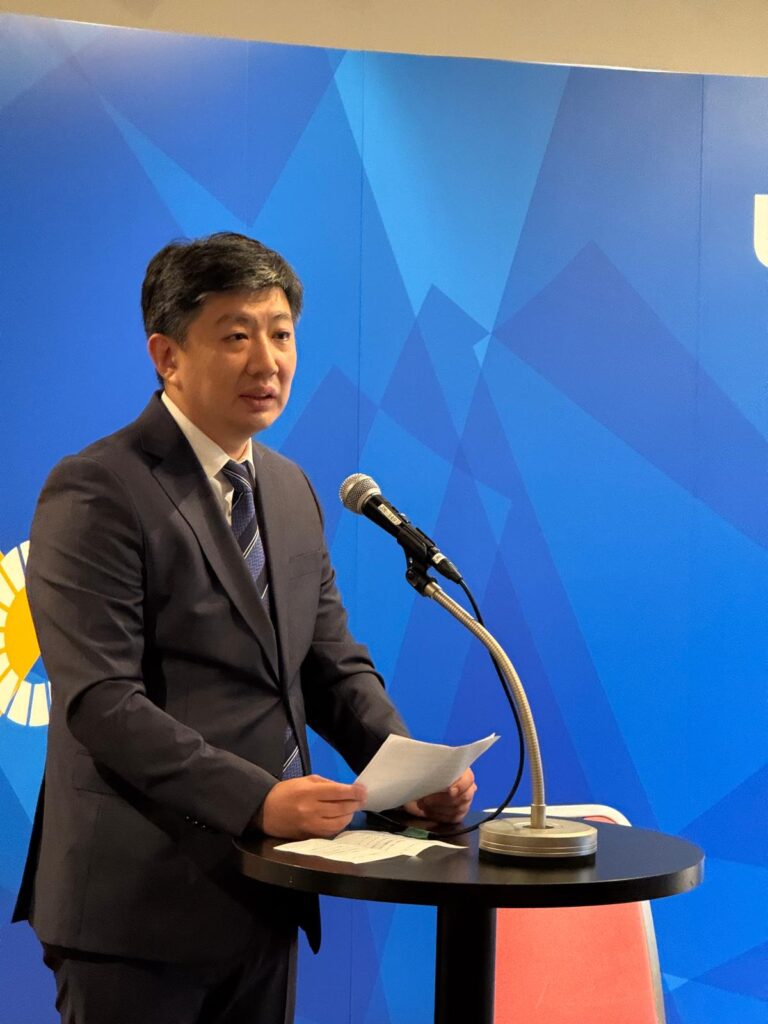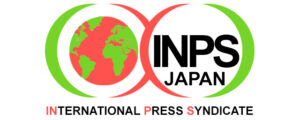Tokyo, Aug. 31, 2025 (INPS Japan) – Marking the United Nations’ International Day Against Nuclear Tests, young activists and experts gathered at the UN University in Tokyo for an event titled “The Role of Youth in Supporting Global Hibakusha.” The forum underscored how youth solidarity can amplify the voices of survivors of nuclear testing and bombings, known collectively as the “Global Hibakusha” — communities scarred by the use, production, and testing of nuclear weapons, from Hiroshima to the Marshall Islands — and strengthen global momentum toward nuclear abolition.
The event was part conference, part call to arms. Its message was clear: the nuclear age is not a matter of history, but a crisis that continues to live in the bodies, memories, and struggles of people worldwide. And young people, the organizers emphasized, must shoulder the responsibility of carrying those voices forward.
Youth Survey on Nuclear Awareness

The forum was convened by five groups with a history of advocacy: International Physicians for the Prevention of Nuclear War (IPPNW), the Qazaq Nuclear Frontline Coalition, Soka Gakkai International (SGI), the Friedrich-Ebert-Stiftung (FES) Kazakhstan, and Marshallese Educational Initiative (MEI).
The five organizations presented the final results of a Youth Peace Awareness Survey, conducted between January 6 and August 9, across five countries—the United States, Australia, Kazakhstan, Japan, and the Marshall Islands. Targeting youth aged 18 to 35, the survey drew responses from 1,580 participants, examining their knowledge of nuclear weapons, attitudes, and readiness for action.
“In every country surveyed, those who had heard the testimony of survivors were more likely to be taking action for nuclear abolition,” said Daiki Nakazawa, a representative from SGI Youth. “It shows that listening to Hibakusha is not simply remembrance. It is a catalyst for activism.”
His colleague, Momoka Abe, added that for their generation, survivor accounts “remain one of the most powerful ways to understand both the human costs of nuclear weapons and the urgency of preventing their use.”
Remembering Kazakhstan’s Nuclear Legacy
A live online dialogue linked participants in Tokyo with Almaty, Kazakhstan. Medet Suleimen of FES Kazakhstan recalled his country’s tragic legacy: during the Soviet era, 456 nuclear tests were conducted at the Semipalatinsk Nuclear Test site in the country’s northeast, directly affecting some 1.5 million people and their descendants.

He reminded the Tokyo audience that much of the data on those tests was removed to Moscow during the Soviet collapse, leaving independent assessments patchy at best. “The consequences are still poorly understood,” he said. “But the human suffering is clear.”
Kazakhstan’s government closed the Semipalatinsk site in 1991, the year of its independence, and voluntarily renounced the world’s fourth-largest nuclear arsenal. It was that historic gesture that the U.N. chose to honor when it designated August 29 as a global day against nuclear testing in 2009.
A Japanese Perspective

For young Japanese, the nuclear legacy is both intimate and distant. Hiroshima and Nagasaki remain central to national memory, but the experience of other nuclear victims — Indigenous Australians, Pacific islanders, Kazakhs — often lies beyond the frame.
Yuki Nihei, an SGI youth who traveled to New York in March for the Third Meeting of States Parties to the Treaty on the Prohibition of Nuclear Weapons (TPNW), recounted a moment that made that gap vivid. At a side event on Global Hibakusha, she listened to testimony from an Indigenous Australian exposed to British nuclear tests.
“There was no warning. No consent. And to this day, they receive little compensation, and their suffering is barely acknowledged,” she said. “While Hiroshima and Nagasaki are often recalled in Japan as historical tragedies, but hearing from Global Hibakusha shows that nuclear harm is present-tense. A lot of people are still suffering now.”
That realization, she said, pushed her to think differently about solidarity:“As a Japanese youth, I want to stand with Global Hibakusha in pursuit of genuine nuclear abolition.”
The Treaty and Its Challenges

Keita Takagaki from the Youth Community for Global Hibakusha emphasized the groundbreaking nature of the TPNW, which for the first time obligates states to provide assistance to victims and undertake environmental remediation (Articles 6 and 7). But he was quick to acknowledge the difficulties: the refusal of nuclear-armed states to join, friction between governments and nongovernmental groups, and the limited resources of many Global South states that are party to the treaty. “The challenges are real,” he said. “But so is the vision. We need to keep pushing to make it real.”
Takagaki also offered a note of caution against reducing youth activism to inheritance. “We often hear that young people should ‘carry on the voices of Hibakusha,’” he said. “That is important, but it is not enough. Each of us must also decide what kind of society we want to build — and take responsibility for creating it.”
Kazakhstan’s Call for Action

Anvar Milzatillayev, Counselor of the Embassy of Kazakhstan in Japan, reaffirmed his country’s post-independence choice to pursue peace without nuclear weapons. He called the event “vital not only to remember past tragedies but to inspire concrete action for the future.” Commenting on the survey finding that many young respondents wished to act for nuclear abolition but “did not know how,” he said this highlighted the need for campaigns to be more accessible and participatory.
“Testimonies of survivors must continue to be shared,” he stressed, “because they have the power to transform awareness into action.” Milzatillayev expressed confidence in the “three powers of youth”—to spread the truth of nuclear harm, to connect across borders, and to mobilize society—adding: “Together with young people of Kazakhstan, Japan, and around the world, we will support the Global Hibakusha and build a nuclear-free future. I truly believe this is possible.”
Professor Tshilidzi Marwala, the Rector of the United Nations University, also emphasized the responsibility to carry forward the voices of all those affected by nuclear weapons. Renewing the United Nations’ founding pledge “to save succeeding generations from the scourge of war,” he called on the generations who will shape the future to take action for peace with foresight and courage.
This article is brought to you by INPS Japan in collaboration with Soka Gakkai International, in consultative status with UN ECOSOC.
INPS Japan
Related articles:
From Semei to Hiroshima: Astana Times Editor on Bringing Global Solidarity Through Journalism
The Intergenerational Impact of Nuclear Testing in Polynesian States
“I Want to Live On” – Documentary Premiere on Kazakhstan Nuclear Test Survivors




